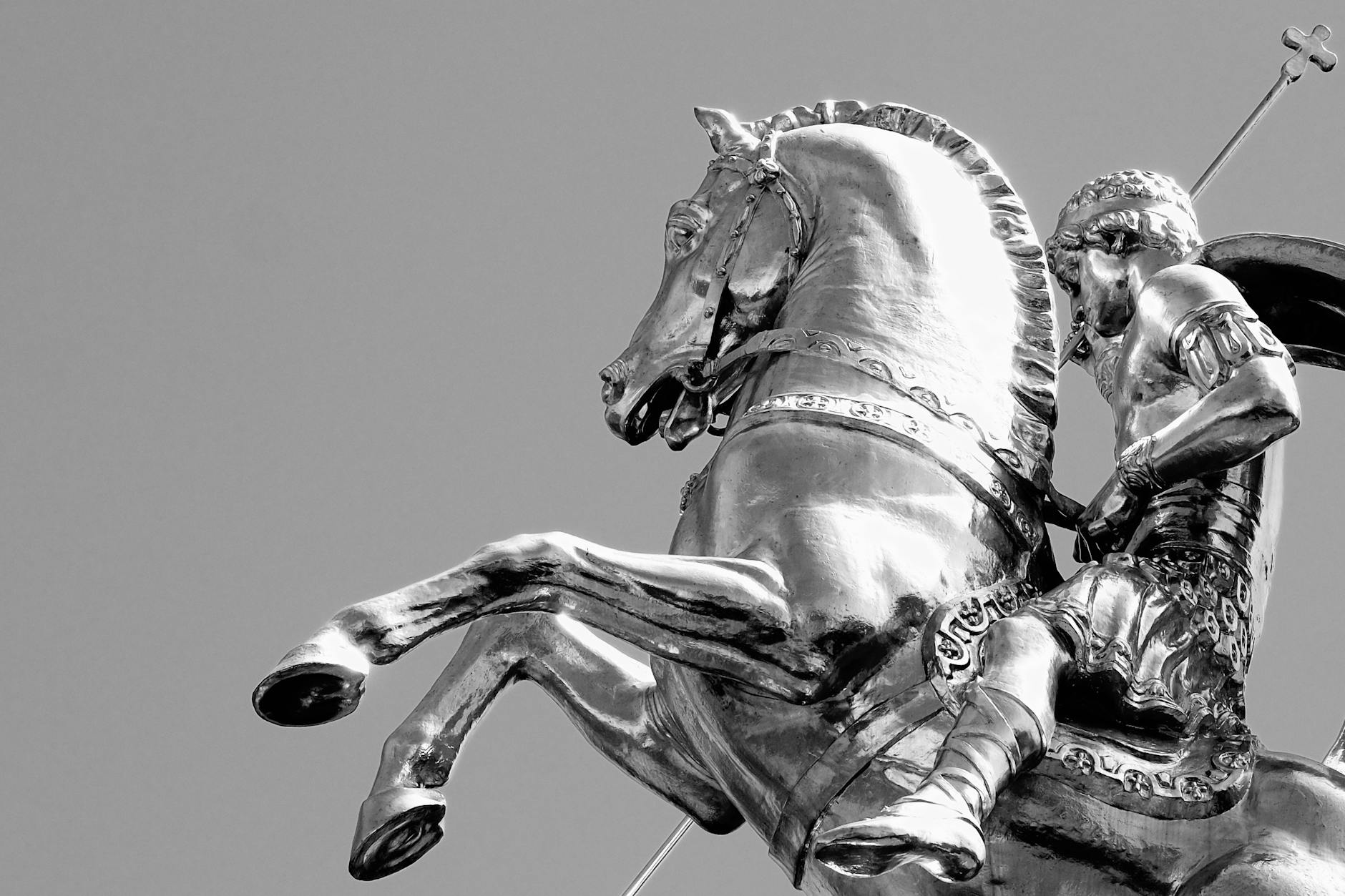April 23rd is widely celebrated as St. George’s Day, a time to honor England’s patron saint, famed for slaying a mighty dragon. While this tale is often seen as a simple story of good triumphing over evil, the deeper folklore surrounding dragons and serpents suggests a far more complex history. Were these creatures truly villains, or did their legends originate from something far older and more mystical? Let’s explore the dark and ancient connections between dragons, serpents, and St. George.
The Legend of Saint George and the Dragon
The traditional story tells of Saint George, a Roman soldier and Christian martyr, who encountered a village terrorized by a monstrous dragon. The villagers, desperate to appease the beast, offered livestock and eventually human sacrifices. When the king’s daughter was chosen, George arrived just in time to slay the dragon, saving the princess and converting the town to Christianity.
However, variations of this tale exist across different cultures, often changing the nature of the dragon itself:
- In Eastern traditions, dragons are symbols of wisdom and power, rather than evil creatures to be slain.
- Some scholars believe the dragon represents older pagan religions, which were symbolically vanquished by Christianity.
- Serpents and dragons are often linked to ancient goddesses, particularly those associated with fertility, earth, and water.
Dragons as Ancient Symbols
Long before the tale of Saint George, dragons and serpents were revered in mythology:
- The Serpent of Eden – In Christian tradition, the serpent tempts Eve, representing knowledge, sin, or transformation.
- Nidhogg of Norse Mythology – A dragon gnawing at the roots of the World Tree, symbolizing destruction and rebirth.
- The Ouroboros – A serpent eating its own tail, an ancient emblem of eternal cycles and balance.
- Tiamat of Babylonian Mythology – A primordial chaos dragon, often viewed as the mother of creation.
In many cases, dragons and serpents were seen as guardians of knowledge rather than mere monsters to be slain. The transition of these beings from sacred to demonic in later folklore may reflect the spread of Christianity and the suppression of older, nature-based spiritual beliefs.
The Pagan Roots of St. George’s Day
Some historians argue that April 23rd was originally associated with older, pre-Christian celebrations:
- Ancient fertility festivals in honor of the earth and the return of the sun after winter.
- The Roman Parilia, a festival honoring shepherds and the protection of flocks.
- Connections to Beltane, a Celtic fire festival that also emphasizes the battle between light and dark.
Could Saint George’s battle with the dragon symbolize the conflict between old and new belief systems? Some believe that the dragon was a representation of pre-Christian deities, with the saint’s victory marking the dominance of Christianity.
Dragons in English Folklore
While St. George’s story is the most famous, England has a long tradition of dragon legends:
- The Lambton Worm (County Durham) – A cursed dragon-like creature that terrorized the land until it was defeated.
- The Dragon of Wormhill (Derbyshire) – A tale of a monstrous serpent subdued by a knight.
- The Wyvern of Wessex – A heraldic symbol that survived through medieval coats of arms.
Interestingly, in some stories, dragons were not killed, but rather tamed or negotiated with, suggesting a more nuanced relationship with these creatures than later Christianized versions suggest.
Should We Rethink the Legend of St. George?
Instead of viewing St. George’s Day as merely a tale of heroism, perhaps we should consider its deeper layers:
- Was the dragon truly evil, or did it represent something older and misunderstood?
- Does the legend reflect the shift from pagan beliefs to Christianity?
- Should we celebrate dragons not as villains, but as ancient symbols of wisdom and transformation?
Final Thoughts
April 23rd marks an important day in English tradition, but it also serves as a reminder of the complex history of dragons, serpents, and belief systems. Whether you celebrate St. George as a hero or look deeper into the myths of the dragons he is said to have slain, this day is a fascinating intersection of legend, history, and mystery.
Want to Know More? Explore our latest articles on folklore, mythical creatures, and ancient legends, and browse our collection of dragon-inspired mystical merchandise!


Leave a Reply